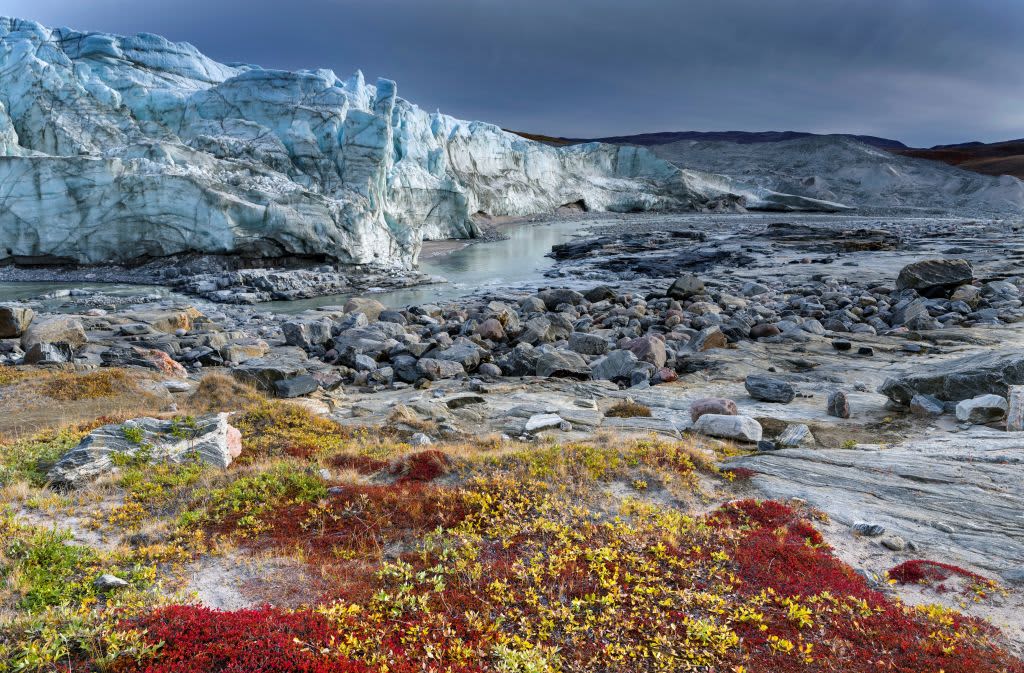
Team of researchers and officers of the Brazilian Navy preparing to leave Wanda Glacier beach and return to Comandante Ferraz Station, Enseada Lussich, on January 04, 2020 in King George Island, Antarctica.
Alessandro Dahan | Getty Images
Global sea levels have risen 0.55 inches since 2003 due to ice melt in Antarctica and Greenland driven by climate change, according to new data measurements from several NASA satellites.
Scientists found that Greenland’s ice sheet lost an average of 200 gigatons of ice per year and Antarctica’s ice sheet lost an average of 118 gigatons of ice per year. One gigaton of ice can fill 400,000 Olympic-sized swimming pools.
Previous studies of ice loss typically analyze data from multiple satellites and airborne missions. The new study, published in the journal Science, took a single type of measurement — height measured by an instrument that bounces laser pulses off the ice surface — to give the most accurate measure of ice sheet change to date.
“If you watch a glacier or ice sheet for a month, or a year, you’re not going to learn much about what the climate is doing to it,” said lead author Benjamin Smith, a glaciologist at the University of Washington. “We now … can be much more confident that the changes we’re seeing in the ice have to do with the long-term changes in the climate.”
Last year, Greenland’s ice sheet, the biggest in the world, contributed to a sea level rise of about 1.5 millimeters in a year of record melting driven by hotter temperatures. The country has seen a significant amount of coastal glacier thinning, with some glaciers losing up to 20 feet of elevation each year as hotter temperatures melt ice and warmer ocean temperatures erode the ice at their fronts, according to the study.
In Antarctica, satellite measurements showed that increased snowfall has actually thickened some part of the ice sheet in the continent’s interior, though ice loss in West Antarctica and the Antarctic Peninsula outweighed the affects of snowfall.
“In West Antarctica, we’re seeing a lot of glaciers thinning very rapidly,” Smith said. “There are ice shelves at the downstream end of those glaciers floating on water. And those ice shelves are thinning, letting more ice flow out into the ocean as the warmer water erodes the ice.”
Terminus of the Russell Glacier. Landscape close to the Greenland Ice Sheet near Kangerlussuaq. America. North America. Greenland. Denmark.
Martin Zwick | UIG | Getty Images
Melting from ice shelves doesn’t raise sea levels because they are already floating, but the shelves do provide stability for the glaciers and ice sheets behind them, the scientists said.
The findings come from the Ice, Cloud and land Elevation Satellite (ICESat-2) that was launched into orbit in 2018 to take elevation measurements of Earth, as well as satellite measurements from 2003 to 2009 that measured ice sheet change.
Global sea levels will rise 2 to 6 feet by 2100 on the current trajectory, driven mainly by melting in Greenland and Antarctica, according to satellite data. But scientists warn that the projections underestimate the climate change impact on sea level rise.
Those estimates have dire consequences for coastal residents, who comprise more than 40% of the total U.S. population and $7.9 trillion in gross domestic product. Sea level rise will destroy coastal property values, displace people and eventually hit global markets unless serious measures to combat greenhouse gas emissions are taken across the world.
Penguin Gentoo on the beach of the Dobrowolski Glacier with red snow in the background, a phenomenon that happens due to the heating of the water, on January 04, 2020 in King George Island, Antarctica.
Alessandro Dahan | Getty Images


